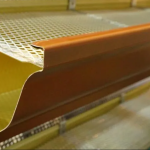Cotton is one of the most grown crops in the world. It is used to produce textiles and various consumer goods. However, traditional cotton farming practices can have detrimental effects on the environment.
There has been a growing movement towards regenerative agriculture. Regenerative cotton farming is a critical part of this movement. It offers numerous benefits for both the environment and farmers.
Read below to learn the various benefits and practices of regenerative cotton farming. We will explore how it promotes soil health, biodiversity, and resilience.
Benefits of Regenerative Cotton Farming
Regenerative cotton farming has benefits for the environment and farmers. Some of these benefits include:
Improved Soil Health
Regenerative agriculture practices in cotton farms improve soil health. This is achieved through crop rotation and cover cropping. It enriches the soil with organic matter.
Increased organic matter enhances the soil’s ability to hold water and sequester carbon. This reduces the need for synthetic fertilizers and combats climate change.
Healthy soil also nurtures a complex web of life. It includes beneficial microorganisms and insects. This contributes to the soil’s natural fertility. This results in more vigorous and resilient cotton plants.
Biodiversity Conservation
Conventional cotton farming methods often involve monoculture. This is where a single crop is grown on the same land year after year.
This practice depletes soil nutrients and encourages pest infestations. It increases pesticide use and other harmful chemicals.
Regenerative cotton farming promotes biodiversity by incorporating diverse crops and rotating them. This helps break pest and disease cycles, reducing the need for chemical interventions. It also creates habitats for beneficial insects and wildlife. This contributes to a more balanced ecosystem.
Resilience
Using regenerative agriculture practices in cotton farming helps build resilience. It enriches the soil and promotes biodiversity. By doing this, crops become more resistant to extreme weather events.
These practices also reduce farmers’ dependency on expensive inputs like fertilizers and pesticides. This increases their economic resilience.
Practices of Regenerative Cotton Farming
There are various practices involved in regenerative cotton farming. This includes:
Crop Rotation
Crop rotation involves growing different crops on the same land over time. This practice helps break pest and disease cycles. It reduces soil erosion and increases soil fertility.
Planting leguminous crops in rotation with cotton can help fix nitrogen in the soil. It reduces the need for synthetic fertilizers. It helps on revitalizing soil health.
Cover Cropping
Cover cropping involves planting cover crops between cotton growing cycles. These plants protect the soil from erosion. It adds organic matter and provides habitats for beneficial insects.
Cover crops are also excellent in suppressing weeds. It reduces the need for herbicides. They can even help reduce water usage. This is improving water infiltration and retention in the soil.
Reduced Tillage
Reduced tillage is a method of planting crops without disturbing the soil. This practice helps preserve soil structure and reduce erosion. This promotes healthy microbial life in the soil.
Reduced tillage also decreases farmers’ fuel consumption and labor costs. This makes it a more sustainable farming method.
Knowing Regenerative cotton
Regenerative cotton farming practices have benefits. By implementing these practices, farmers can contribute to a more sustainable future. Let us support regenerative cotton farming. Do our part in revitalizing soil health. Together, we can make a positive impact on the environment.
Visit our website and read more.















